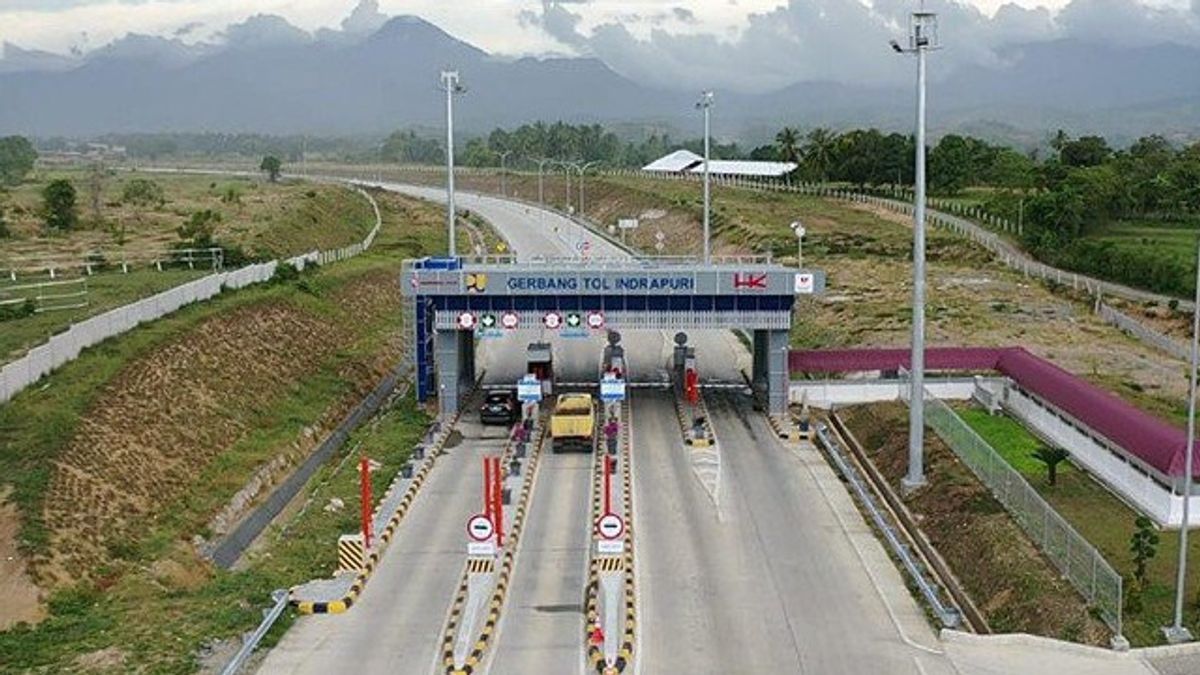The government through the Ministry of Public Works and Public Housing (PUPR) will test the toll pay system without stopping at a number of toll roads in 2023.
The non-cash toll payment system contacting or paying for non-stop toll roads based on this application is an innovation carried out by the Toll Road Regulatory Agency (BPJT) as an institution under the Ministry of PUPR which regulates toll roads in Indonesia. So how does it work?
Quoted by VOI from the official BPJT website, Thursday, October 20, 2022, the toll payment system without opening the glass and stopping alias Multi Lane Free Flow (MLFF) form of innovation and digital transformation on the Toll Road with the concept of intelligence toll road system (ITRS) which refers to Toll Road 4.0 technology.
Secretary of BPJT Triono Junoasmono said, in general, MLFF's technological innovation is a breakthrough in transaction services on touchless Toll Roads that are carried out automatically through applications on smartphones using a server based system with Global Navigation Satellite System (GNSS) technology and vehicle data recognized using satellites.
"Later on, when MLFF technology begins to be implemented, Toll Road users can make non-cash payments without tapping a card, namely only by downloading and registering personal data on an application called Cantas on their respective smartphones that have been connected to the internet. Then after calculating the rates connected to the application, the money from each payment instrument belonging to each user will also be reduced automatically," explained Triono.
For information, the MLFF system will be introduced to the public by the end of 2022 and tested on several Toll Roads in 2023.
The roads include:
Meanwhile, Project Manager of PT Rotex Indonesia Toll System (RITS) Emil Iskandar explained that the device used in the MLFF contactless transaction is in the form of an Electronic On-Board Unit or known as E-OBU. Thus, users must activate the E-OBU first before entering the toll gate.
Once the E-OBU is active, GPS will determine the user's position based on the satellite, which then the map matching process will occur at the center of the system.
According to Emil, GNSS technology eliminates barriers at toll gates and ensures that all movements on toll roads are detected. Users are required to ensure that balances are available in the application before entering the toll gate. Later, the application will send notifications if a user enters, but the balance is insufficient, said Emil.
"In addition, we are also collaborating with the Korlantas Polri so if a user enters but does not have an application, then Korlantas will send a warning. Even though the barrier is no longer there, it is still under supervision for drivers who violate it," he concluded.
Benefits of the Toll Pay System Without Stopping
There are a number of benefits that toll road users will get from the implementation of the toll road payment system without stopping or MLFF.
According to Triono, Toll Road users will certainly have a better user experience, gain operating cost efficiency and also reduce vehicle fuel consumption.
Meanwhile, according to the Head of Operations and Maintenance Sub-Division I, BPJT Secretariat Galuh Permana Waluyo, the implementation of the toll pay system without stopping can reduce congestion, eliminate queues at toll gates, and reduce air pollution due to vehicle stops.
The English, Chinese, Japanese, Arabic, and French versions are automatically generated by the AI. So there may still be inaccuracies in translating, please always see Indonesian as our main language. (system supported by DigitalSiber.id)








